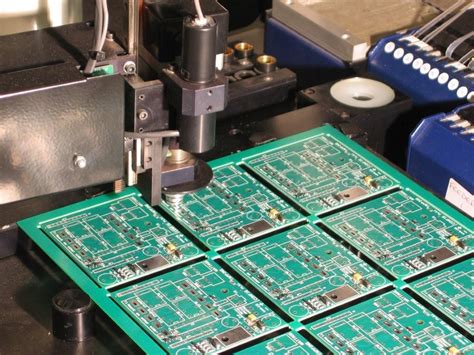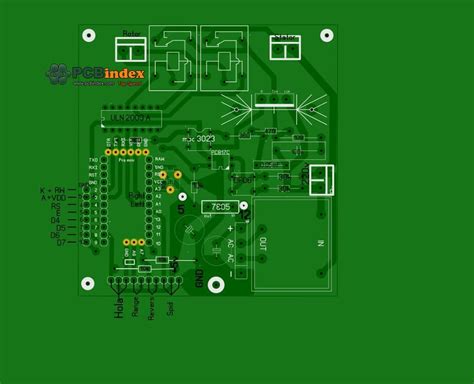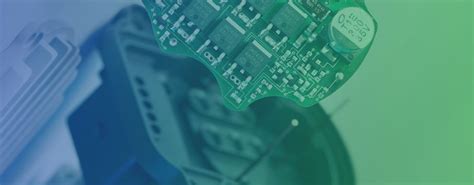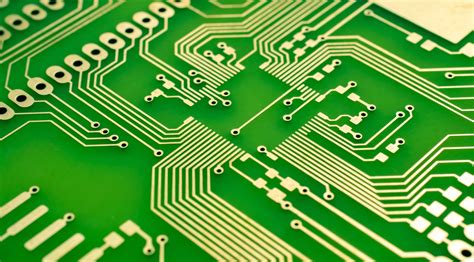Copper metal core pcb
Advantages Of Copper Metal Core PCBs In High-Performance Electronics
Copper metal core printed circuit boards (PCBs) have emerged as a pivotal innovation in the realm of high-performance electronics, offering a multitude of advantages that cater to the demanding needs of modern technology. As electronic devices continue to shrink in size while increasing in functionality, the need for efficient thermal management and enhanced electrical performance becomes paramount. Copper metal core PCBs address these challenges by providing superior thermal conductivity, mechanical stability, and electrical performance, making them an ideal choice for a wide range of applications.
One of the primary advantages of copper metal core PCBs is their exceptional thermal conductivity.
In high-performance electronics, managing heat dissipation is crucial to ensure the reliability and longevity of the components. Copper, known for its excellent thermal properties, serves as an effective heat sink, efficiently dissipating heat away from critical components. This capability is particularly beneficial in applications such as LED lighting, power electronics, and automotive systems, where excessive heat can lead to performance degradation or even failure. By incorporating a copper core, these PCBs help maintain optimal operating temperatures, thereby enhancing the overall performance and lifespan of the electronic device.
In addition to thermal management, copper metal core PCBs offer significant mechanical stability.
The robust nature of copper provides a sturdy foundation that can withstand mechanical stresses and vibrations, which are common in high-performance environments. This durability ensures that the PCBs maintain their structural integrity even under challenging conditions, reducing the risk of damage and ensuring consistent performance. Consequently, copper metal core PCBs are well-suited for applications in aerospace, industrial machinery, and other sectors where reliability is non-negotiable.
Moreover, the electrical performance of copper metal core PCBs is another compelling advantage.
Copper’s high electrical conductivity ensures minimal signal loss and efficient power distribution across the board. This is particularly important in high-frequency applications, where signal integrity is critical. The use of copper cores helps in reducing electromagnetic interference (EMI) and maintaining signal clarity, which is essential for applications such as telecommunications and data processing. By facilitating efficient electrical pathways, copper metal core PCBs contribute to the overall efficiency and effectiveness of electronic systems.
Furthermore, the versatility of copper metal core PCBs cannot be overlooked.
They can be customized to meet specific design requirements, allowing for greater flexibility in the development of electronic devices. This adaptability is crucial in a rapidly evolving technological landscape, where the ability to tailor solutions to specific needs can provide a competitive edge. Whether it is adjusting the thickness of the copper core or incorporating additional layers for enhanced functionality, these PCBs offer a level of customization that is invaluable to designers and engineers.
In conclusion, copper metal core PCBs present a host of advantages that make them indispensable in high-performance electronics.
Their superior thermal conductivity, mechanical stability, and electrical performance address the critical challenges faced by modern electronic devices. As technology continues to advance, the demand for efficient, reliable, and adaptable solutions will only grow, solidifying the role of copper metal core PCBs as a cornerstone in the development of cutting-edge electronic systems. By leveraging the unique properties of copper, these PCBs not only meet the current demands of the industry but also pave the way for future innovations.

Thermal Management Solutions Using Copper Metal Core PCBs
In the realm of electronic design and manufacturing, thermal management is a critical consideration that can significantly impact the performance and longevity of electronic devices. As electronic components become increasingly powerful and compact, the need for effective heat dissipation solutions has never been more pressing. One innovative approach to addressing this challenge is the use of copper metal core printed circuit boards (PCBs). These specialized PCBs offer a robust solution for managing heat in high-performance applications, making them an invaluable asset in the electronics industry.
Copper metal core PCBs are designed with a layer of copper at their core, which serves as an excellent conductor of heat.
This core is typically sandwiched between layers of dielectric material and copper foil, creating a structure that efficiently transfers heat away from critical components. The high thermal conductivity of copper allows these PCBs to dissipate heat more effectively than traditional FR-4 boards, which are commonly used in electronic devices. As a result, copper metal core PCBs are particularly well-suited for applications where heat generation is a significant concern, such as in LED lighting, power electronics, and automotive systems.
One of the primary advantages of using copper metal core PCBs is their ability to enhance the reliability and performance of electronic devices.
By efficiently managing heat, these PCBs help prevent overheating, which can lead to component failure and reduced device lifespan. Moreover, the improved thermal performance of copper metal core PCBs allows for higher power densities, enabling designers to create more compact and powerful electronic systems. This is particularly beneficial in industries where space is at a premium, such as in aerospace and telecommunications.
In addition to their thermal management capabilities, copper metal core PCBs also offer mechanical benefits.
The copper core provides added rigidity and strength to the PCB, making it more resistant to mechanical stress and deformation. This is especially important in applications where the PCB may be subjected to harsh environmental conditions or physical impacts. Furthermore, the enhanced structural integrity of copper metal core PCBs can contribute to improved signal integrity, as the stable platform reduces the risk of signal distortion caused by board flexing.
Despite their numerous advantages, it is important to consider the potential challenges associated with using copper metal core PCBs.
One such challenge is the increased cost compared to traditional PCBs. The use of copper, a relatively expensive material, can drive up manufacturing costs, which may be a consideration for budget-conscious projects. Additionally, the design and fabrication of copper metal core PCBs can be more complex, requiring specialized knowledge and equipment. However, for applications where thermal management is a critical concern, the benefits of copper metal core PCBs often outweigh these challenges.
In conclusion, copper metal core PCBs represent a powerful solution for thermal management in electronic devices. Their ability to efficiently dissipate heat, combined with their mechanical strength and reliability, makes them an ideal choice for high-performance applications. As the demand for more powerful and compact electronic systems continues to grow, the role of copper metal core PCBs in ensuring optimal thermal performance will undoubtedly become increasingly important. By addressing the challenges associated with heat dissipation, these innovative PCBs pave the way for the development of more advanced and reliable electronic technologies.

Design Considerations For Copper Metal Core PCBs In LED Applications
In the realm of LED applications, the design considerations for copper metal core printed circuit boards (PCBs) are of paramount importance. These specialized PCBs are integral to the efficient functioning of LED systems, primarily due to their superior thermal management capabilities. As LEDs generate significant heat during operation, managing this thermal output is crucial to maintaining performance and longevity. Copper metal core PCBs, with their excellent thermal conductivity, offer a robust solution to this challenge, ensuring that heat is effectively dissipated away from sensitive components.
One of the primary considerations in designing copper metal core PCBs for LED applications is the selection of appropriate materials.
The core material, typically a copper substrate, is chosen for its high thermal conductivity, which is essential for effective heat dissipation. This choice of material directly impacts the thermal performance of the PCB, making it a critical factor in the design process. Additionally, the thickness of the copper layer must be carefully considered, as it influences both the thermal and electrical performance of the PCB. A thicker copper layer can enhance heat dissipation but may also increase the overall weight and cost of the PCB.
Another important aspect of design is the layout of the PCB.
The arrangement of components and the routing of traces must be optimized to facilitate efficient heat transfer. This involves strategically placing heat-generating components, such as LEDs, in proximity to the copper core to maximize thermal conduction. Furthermore, the use of thermal vias can be employed to enhance heat dissipation. These vias act as conduits, channeling heat from the surface of the PCB to the copper core, thereby improving the overall thermal management of the system.
In addition to thermal considerations, electrical performance is also a key factor in the design of copper metal core PCBs for LED applications.
The electrical properties of the PCB must be tailored to meet the specific requirements of the LED system. This includes ensuring that the PCB can handle the necessary current levels without excessive voltage drop or power loss. The design must also account for potential electromagnetic interference (EMI), which can affect the performance of the LED system. By incorporating appropriate shielding and grounding techniques, designers can mitigate the impact of EMI and ensure reliable operation.
Moreover, the mechanical properties of the PCB must be considered to ensure durability and reliability.
The copper core provides a robust foundation, but the overall design must also account for factors such as vibration, shock, and thermal cycling, which can affect the integrity of the PCB over time. By selecting materials and designing the PCB to withstand these environmental stresses, manufacturers can enhance the longevity and performance of LED systems.
In conclusion, the design of copper metal core PCBs for LED applications involves a careful balance of thermal, electrical, and mechanical considerations. By selecting appropriate materials, optimizing the layout, and addressing potential challenges such as EMI and environmental stresses, designers can create PCBs that not only enhance the performance of LED systems but also ensure their reliability and longevity. As LED technology continues to evolve, the role of copper metal core PCBs in managing heat and improving efficiency will remain a critical component of successful LED applications.

Comparing Copper Metal Core PCBs To Aluminum Core Alternatives
In the realm of printed circuit boards (PCBs), the choice of core material plays a pivotal role in determining the performance and reliability of electronic devices. Among the various options available, copper metal core PCBs and aluminum core alternatives stand out due to their unique properties and applications. Understanding the differences between these two materials is essential for making informed decisions in electronic design and manufacturing.
Copper metal core PCBs are renowned for their excellent thermal conductivity, which is a critical factor in managing heat dissipation in high-power applications.
Copper, being a superior conductor of heat, allows for efficient thermal management, thereby enhancing the performance and longevity of electronic components. This characteristic is particularly advantageous in applications where heat generation is significant, such as in LED lighting, power converters, and automotive electronics. The ability of copper to quickly transfer heat away from sensitive components helps in maintaining optimal operating temperatures, thus reducing the risk of thermal-related failures.
In contrast, aluminum core PCBs, while also offering good thermal conductivity, are generally considered to be less efficient than their copper counterparts.
Aluminum is a more cost-effective material, which makes it an attractive option for applications where budget constraints are a primary concern. Despite its lower thermal conductivity compared to copper, aluminum still provides adequate heat dissipation for many applications, making it a viable choice for consumer electronics and other cost-sensitive projects. The lighter weight of aluminum also contributes to its appeal, particularly in applications where weight reduction is a priority.
Transitioning from thermal properties to mechanical characteristics, copper metal core PCBs exhibit superior mechanical strength and durability.
This robustness is beneficial in environments subject to mechanical stress or vibration, ensuring the integrity and reliability of the electronic assembly. On the other hand, aluminum core PCBs, while offering reasonable mechanical properties, may not match the strength and resilience of copper. However, they still provide sufficient durability for a wide range of applications, especially where mechanical demands are moderate.
Another aspect to consider is the electrical conductivity of the core material.
Copper, being an excellent conductor of electricity, offers lower electrical resistance, which can be advantageous in high-frequency applications. This property ensures minimal signal loss and improved electrical performance, making copper metal core PCBs suitable for advanced communication systems and high-speed electronic devices. Aluminum, although not as conductive as copper, still provides adequate electrical performance for many standard applications, balancing cost and functionality effectively.
In terms of environmental impact and recyclability, both copper and aluminum have their advantages.
Copper is highly recyclable and can be reused without significant loss of quality, contributing to sustainable manufacturing practices. Aluminum, too, is recyclable and often favored for its lower environmental footprint during production. The choice between these materials may also be influenced by specific environmental regulations and sustainability goals of a project.
In conclusion, the decision between copper metal core PCBs and aluminum core alternatives hinges on a variety of factors, including thermal and electrical performance, mechanical strength, cost considerations, and environmental impact. While copper offers superior thermal and electrical properties, aluminum provides a cost-effective and lightweight solution for many applications. Ultimately, the selection of core material should align with the specific requirements and constraints of the intended application, ensuring optimal performance and reliability of the electronic device.







